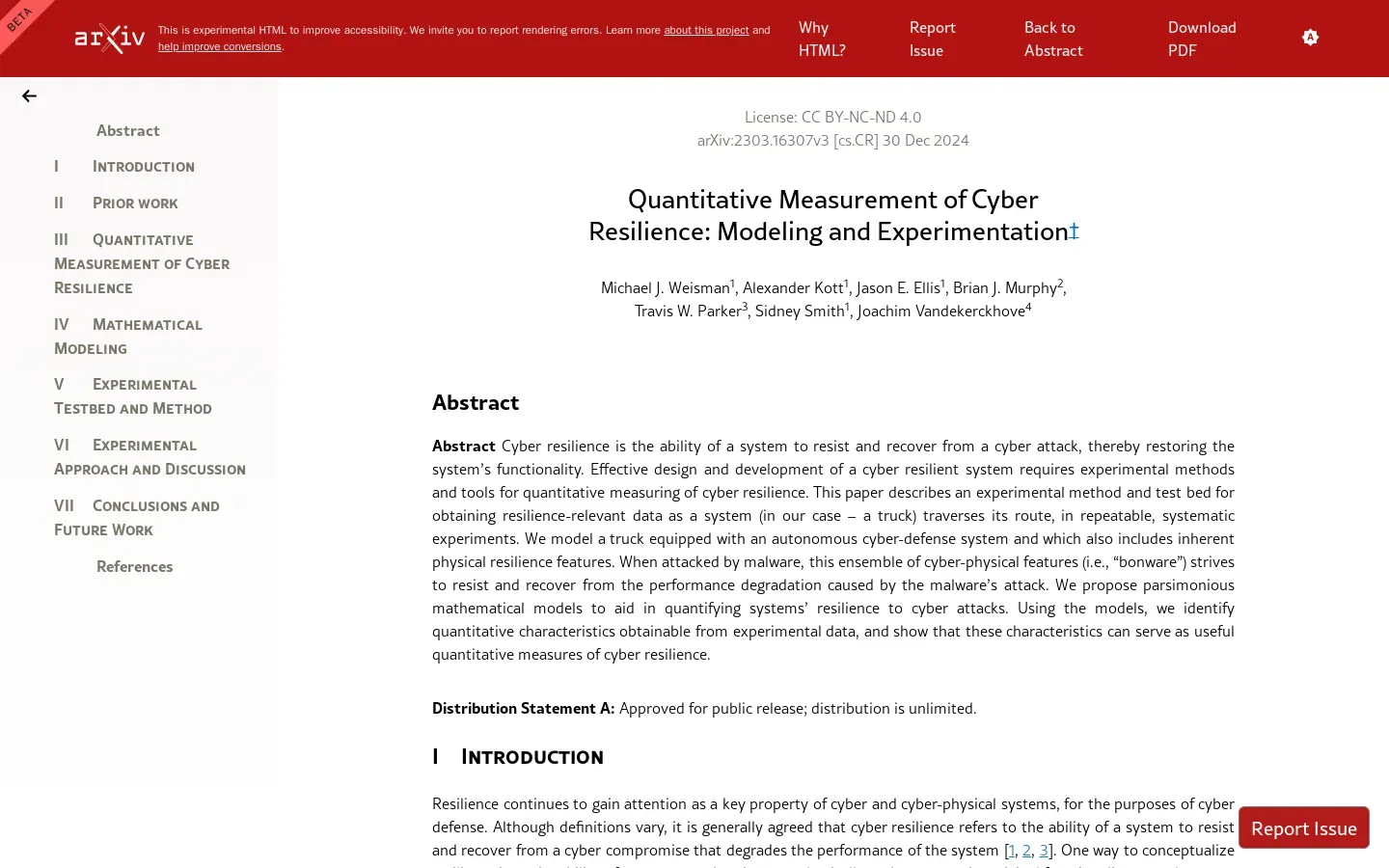
Quantitative Approaches to Cyber Resilience Explored in Research
/ 4 min read
Quick take - Recent research has advanced the understanding and quantification of cyber resilience, particularly for cyber-physical systems, by establishing methodologies and tools that enhance system design and development in response to increasingly sophisticated cyber threats.
Fast Facts
- Recent research has advanced the understanding and quantification of cyber resilience, particularly for cyber-physical systems, emphasizing the need for robust methodologies in response to sophisticated cyber threats.
- Key contributions include a test bed for resilience experiments, the Area Under the Curve (AUC) method for performance measurement, mathematical modeling, and the use of digital twin technology for enhanced monitoring.
- Practical implications guide the design of cyber resilience measures, influencing policy and operational decisions in both military and civilian sectors, such as vehicle designs and real-time monitoring systems.
- Future research directions focus on integrating autonomous systems in cyber defense, developing specific resilience metrics for emerging technologies, and fostering cross-sector collaborations to enhance overall resilience.
- The study highlights the importance of a multifaceted approach to cybersecurity, advocating for continuous refinement of strategies and tools to maintain resilience against evolving cyber threats.
Advancements in Cyber Resilience Methodology and Applications
In a world where cyber threats are becoming increasingly sophisticated, recent research has made significant strides in understanding and quantifying cyber resilience, particularly for cyber-physical systems. This groundbreaking study aims to establish robust methodologies that enhance the design and development of resilient systems. The findings not only contribute to theoretical knowledge but also provide actionable insights for practical applications across both military and civilian sectors.
Key Findings
The research highlights several pivotal findings that deepen our understanding of cyber resilience. By adopting a comprehensive, data-driven approach, the study underscores the importance of integrating cyber resilience metrics into system designs. This foundational work is expected to facilitate future research and the development of effective cyber resilience measures, especially in high-stakes military applications.
Among the significant contributions of the study are:
-
Test Bed for Cyber Resilience Experiments: This controlled environment allows for the evaluation of various resilience strategies, providing a practical framework for testing.
-
Area Under the Curve (AUC) Method: A statistical approach used to measure the performance of resilience metrics, offering a quantitative basis for assessment.
-
Mathematical Modeling of Cyber Resilience: These models are crucial for analyzing resilience in systems, with particular relevance to military contexts where precision is paramount.
-
Digital Twin Technology: By utilizing virtual replicas of physical systems, this technology enhances monitoring and response strategies, offering real-time insights and cross-domain applications.
These tools not only provide frameworks for current resilience evaluations but also pave the way for real-time monitoring and further advancements in the field.
Practical Implications
The implications of these findings are profound, guiding the design and implementation of cyber resilience measures that influence policy and operational decisions across various sectors. For instance, integrating cyber resilience metrics into vehicle designs can significantly enhance the defensive posture of both military and civilian infrastructure.
Moreover, the research advocates for developing simulation and training environments to prepare organizations for emerging cyber threats. This proactive approach is essential for fostering a culture of resilience and adaptability in an increasingly interconnected world.
Limitations and Future Directions
While the research presents numerous strengths, such as its practical implications and data-driven methodologies, it also acknowledges limitations that require further investigation. There is a pressing need to explore the integration of autonomous systems in cyber defense and establish cross-sector collaborations to enhance overall cyber resilience. Additionally, the evolving nature of emerging technologies necessitates developing specific resilience metrics tailored to these innovations.
Future directions for research include:
-
Integration of Autonomous Systems in Cyber Defense: Investigating how autonomous technologies can bolster defenses against cyber threats.
-
Cyber Resilience Metrics for Emerging Technologies: Creating specific metrics that address unique challenges posed by new technologies.
-
Simulation and Testing Environments: Expanding these environments to cover a broader array of scenarios and threats.
-
Cross-Sector Collaboration for Cyber Resilience: Encouraging partnerships between public and private sectors to share knowledge and strategies.
As advancements in cyber resilience continue to unfold, stakeholders must prioritize robust methodologies and practical applications to significantly enhance their defenses against evolving cyber threats. The ongoing refinement of these strategies and tools will be crucial in ensuring that systems remain resilient amidst adversity.



